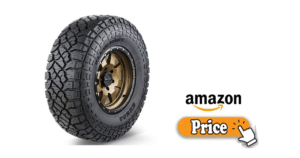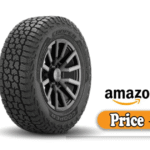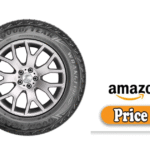In today’s global market, where a product is made says a lot about its quality, reliability, and cost. When it comes to tires, this is especially true. If you’ve been browsing affordable and versatile tire options, you’ve likely come across Kenda.
But one question keeps coming up: Where are Kenda tires made? Kenda is a well-known name in the tire industry, especially among budget-conscious consumers looking for dependable tires for cars, trucks, bikes, trailers, and even lawn equipment.
While Kenda may not be as well-known as Michelin or Goodyear, its popularity is growing, and so is curiosity about its manufacturing origin and quality.
In thisdetaild we’ll explore where Kenda tires are made, what makes them a compelling option, how they compare to competitors, and whether they’re the right choice for you.
What I Like About Kenda Tires
Kenda tires come with several standout qualities that make them worth considering for a wide range of drivers.
1. Affordable Pricing Without Sacrificing Basics
Kenda tires are among the most budget-friendly options on the market. While cost-effective, they don’t compromise on core safety and performance features for daily driving.
2. Diverse Product Range
Whether you’re looking for all-season tires for your car, off-road tires for your ATV, or trailer tires for your RV, Kenda has a tire for almost every type of vehicle.
3. Good Performance in Light Duty Applications
Kenda excels in light to moderate driving environments. Their tires perform well for city commutes, weekend drives, or even highway cruising, making them ideal for everyday users.
4. Reputation for Reliability
Despite being an affordable brand, Kenda tires generally offer solid tread life, resistance to punctures, and dependable wet/dry handling for non-performance needs.
5. Global Reach
The brand’s international presence and OEM partnerships suggest a level of credibility and trust from vehicle manufacturers around the world.
What Could Be Better
While Kenda delivers value, it does come with a few trade-offs that are important to know before purchasing.
1. Not Suited for High-Performance Driving
If you’re a performance enthusiast, Kenda may fall short. Their tires are not designed for track use or aggressive driving.
2. Limited Winter Tire Options
Kenda’s lineup lacks robust options for severe winter conditions. If you drive in snow-heavy regions, you’ll likely need to explore more specialized winter brands.
3. Less Noise and Comfort Optimization
While acceptable for short trips, Kenda tires may produce more road noise and offer less ride comfort compared to premium brands like Continental or Bridgestone.
4. Lower Treadwear Warranties
Most Kenda tires come with lower mileage warranties (35,000 to 50,000 miles). While this aligns with their price, it may not be ideal for long-distance drivers. 👉🏿👉🏻 Check The Latest Price and Offer at Amazon 👈🏻👈🏿
👉🏿👉🏻 Check The Latest Price and Offer at Amazon 👈🏻👈🏿
My Personal Experience with Kenda Tires
I first tried Kenda KR20A tires on an older sedan I use for short city commutes and weekend errands. Here’s how it went:
Installation and First Impressions
I had them installed at a local independent shop. The tires balanced well and looked solid. During the first few drives, I noticed adequate grip and surprisingly decent cornering for the price point.
City and Highway Performance
For city driving, the tires handled potholes, rain, and everyday braking just fine. On the highway, I experienced more road noise than with my previous set of Michelins, but it wasn’t unbearable.
Tread Life and Wear
After about 20,000 miles, I noticed even tread wear and no structural issues. I rotate tires every 6,000 miles, which likely helped extend their life.
Would I Buy Again?
Absolutely for a second car or a vehicle not used for aggressive driving. For high-mileage travel or luxury comfort, I’d opt for something more premium.
Design: Function Over Flash
Kenda may not invest as much in tire aesthetics or cutting-edge technology as other brands, but it still manages to deliver practical, efficient designs.
Tread Patterns
The tread designs are simple and utilitarian. Many Kenda tires use symmetrical patterns for consistent wear and reliable traction. Some models, like the Kenda Klever A/T, feature slightly more aggressive tread for off-road capability.
Sidewall Construction
Sidewalls are reinforced enough to handle curb hits and basic off-road conditions. Some models come with dual sidewall options for improved sidewall protection.
Rubber Compounds
While not proprietary blends like Michelin’s or Goodyear’s, Kenda uses dependable rubber formulas that balance grip and wear life, especially in warm and moderate climates.
Performance: What to Expect on the Road
So how do Kenda tires perform? Here’s a breakdown of real-world conditions:
Dry Road Handling
For daily commutes and errands, Kenda tires deliver good grip and steering response. They may not have the ultra-precise handling of performance tires, but they do what’s expected for casual driving.
Wet Conditions
In wet weather, tread grooves do a decent job of channeling water, especially on newer all-season models like the Kenetica KR217. However, braking distances may be longer than higher-end options.
Snow and Ice
Kenda has limited snow tire options. The Klever M/T can handle light snow, but it’s not a dedicated winter tire. For icy or heavy snow conditions, a more specialized tire is recommended.
Noise and Comfort
Expect a slightly firmer ride and more cabin noise on highways compared to premium tire brands. That said, for local drives and rural roads, they’re perfectly fine.
Build Quality: Where Are Kenda Tires Made?
Let’s get to the heart of the question: Where are Kenda tires made?
Primary Manufacturing Locations
Kenda tires are produced in multiple countries, including:
- Taiwan (Headquarters and several manufacturing plants)
- China
- Vietnam
- Indonesia
- United States (select models and OEM applications)
Their global production model allows Kenda to keep costs low while maintaining consistent quality standards across different markets.
Made to Global Standards
Despite being manufactured in Asia, Kenda tires meet international safety and quality certifications, including:
- DOT (U.S. Department of Transportation)
- ECE (European Safety Standards)
- ISO 9001 and ISO/TS 16949 certification
OEM Partnerships
Kenda supplies OEM tires for some well-known vehicle and equipment manufacturers, which speaks to their credibility in the tire manufacturing world.
Alternative Options to Kenda Tires
If you’re exploring similar price or performance ranges, here are a few alternatives:
1. Kumho Tires
- Pros: Slightly more refined ride, similar pricing.
- Cons: Slightly lower treadwear ratings.
- Verdict: Good option for budget-focused drivers wanting a softer ride.
2. Hankook Tires
- Pros: Better technology and wet traction.
- Cons: Slightly more expensive.
- Verdict: A step up in refinement, but close in value.
3. Cooper Tires
- Pros: Excellent durability, made in the USA.
- Cons: Higher upfront cost.
- Verdict: Ideal for buyers who want a balance of value and quality.
4. Ironman Tires
- Pros: Comparable pricing, decent all-season grip.
- Cons: Shorter tread life.
- Verdict: Another solid value option for casual drivers.
Final Thought:
So, are Kenda tires worth it, and should you care about where Kenda tires are made?
Here’s the final verdict:
Kenda tires are a smart, budget-conscious choice for everyday drivers, second vehicles, trailers, or off-road enthusiasts who want capable tires at a lower price. They’re made primarily in Taiwan, China, Vietnam, and Indonesia, but follow global standards and have earned the trust of OEMs and consumers alike.
If your expectations are realistic, solid performance without luxury-level refinement, then Kenda tires will not disappoint.
FAQs: Where Are Kenda Tires Made
Q1: Where are Kenda tires manufactured?
Kenda tires are made in Taiwan, China, Vietnam, Indonesia, and, for select models, the United States. The company uses global manufacturing to reduce costs and meet international demand.
Q2: Is Kenda a Chinese company?
No. Kenda is a Taiwanese company founded in 1962, with headquarters in Yuanlin, Taiwan. While some tires are made in China, the brand is not Chinese-owned.
Q3: Are Kenda tires of good quality?
Yes, especially for their price. Kenda tires meet DOT and international safety standards and offer good performance for everyday use.
Q4: How long do Kenda tires last?
Most Kenda tires last between 35,000 and 50,000 miles, depending on the model and driving conditions.
Q5: Are Kenda tires safe?
Yes. Kenda tires undergo rigorous testing and meet international safety certifications, including DOT and ECE standards.
Q6: Does Kenda make all-season tires?
Absolutely. Kenda has multiple all-season models like the Kenetica KR217 and Klever A/T2, suitable for light trucks and passenger cars.
Q7: Where can I buy Kenda tires?
You can find Kenda tires online at Tire Rack, SimpleTire, Walmart, and Amazon, as well as through independent tire retailers.
Q8: Do Kenda tires come with a warranty?
Yes. Most models come with limited treadwear warranties ranging from 40,000 to 50,000 miles.
Q9: Are Kenda trailer tires good?
Yes. Kenda is known for making durable trailer and utility tires under its Loadstar and Karrier sub-brands.
Q10: What vehicles are Kenda tires best suited for?
Kenda tires are best for compact cars, SUVs, light trucks, trailers, and ATVs, especially when affordability is key.




